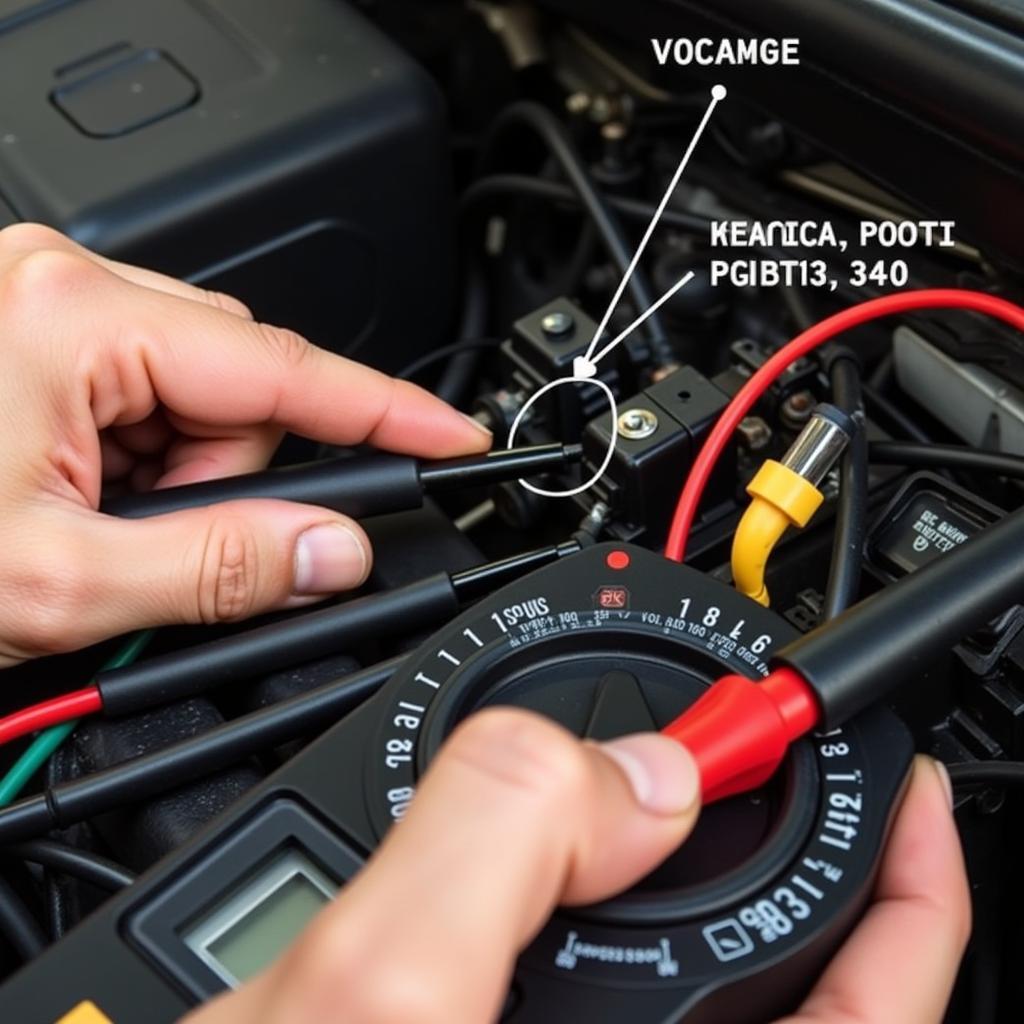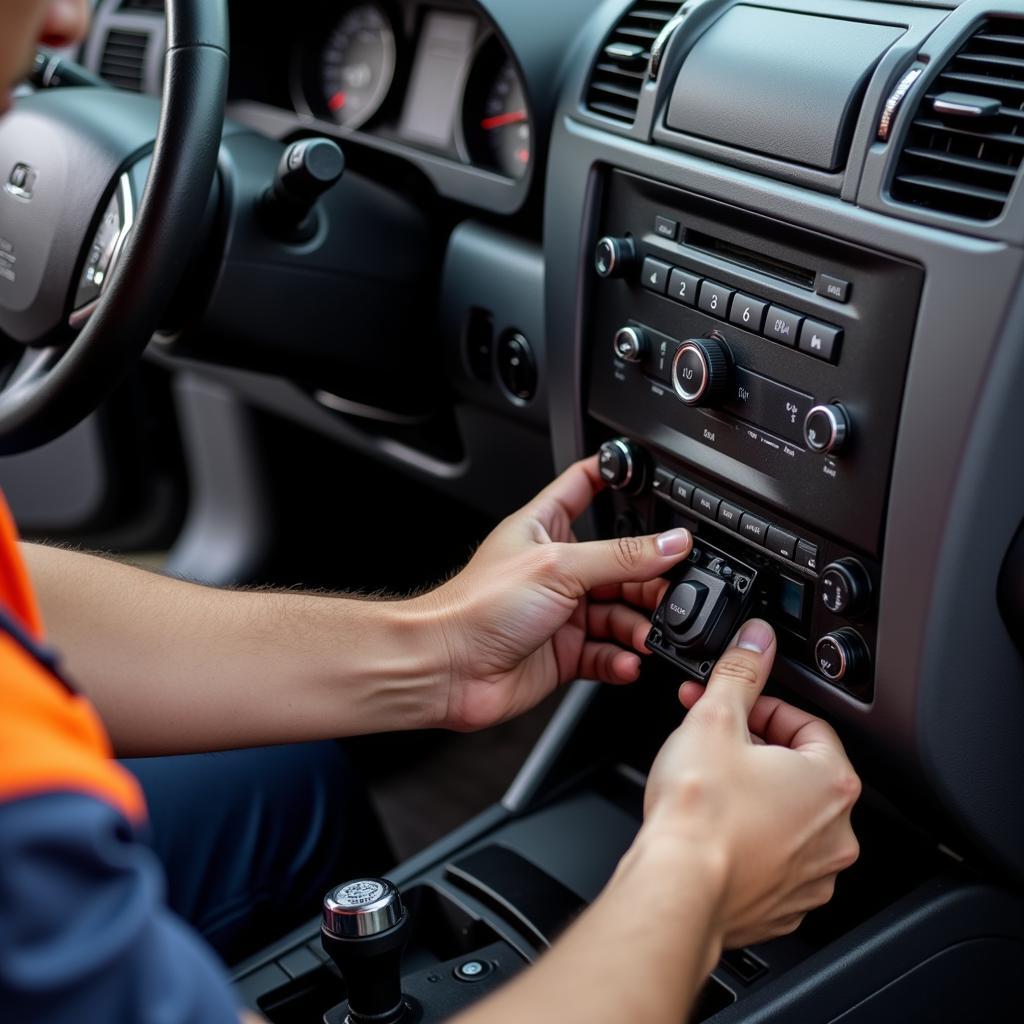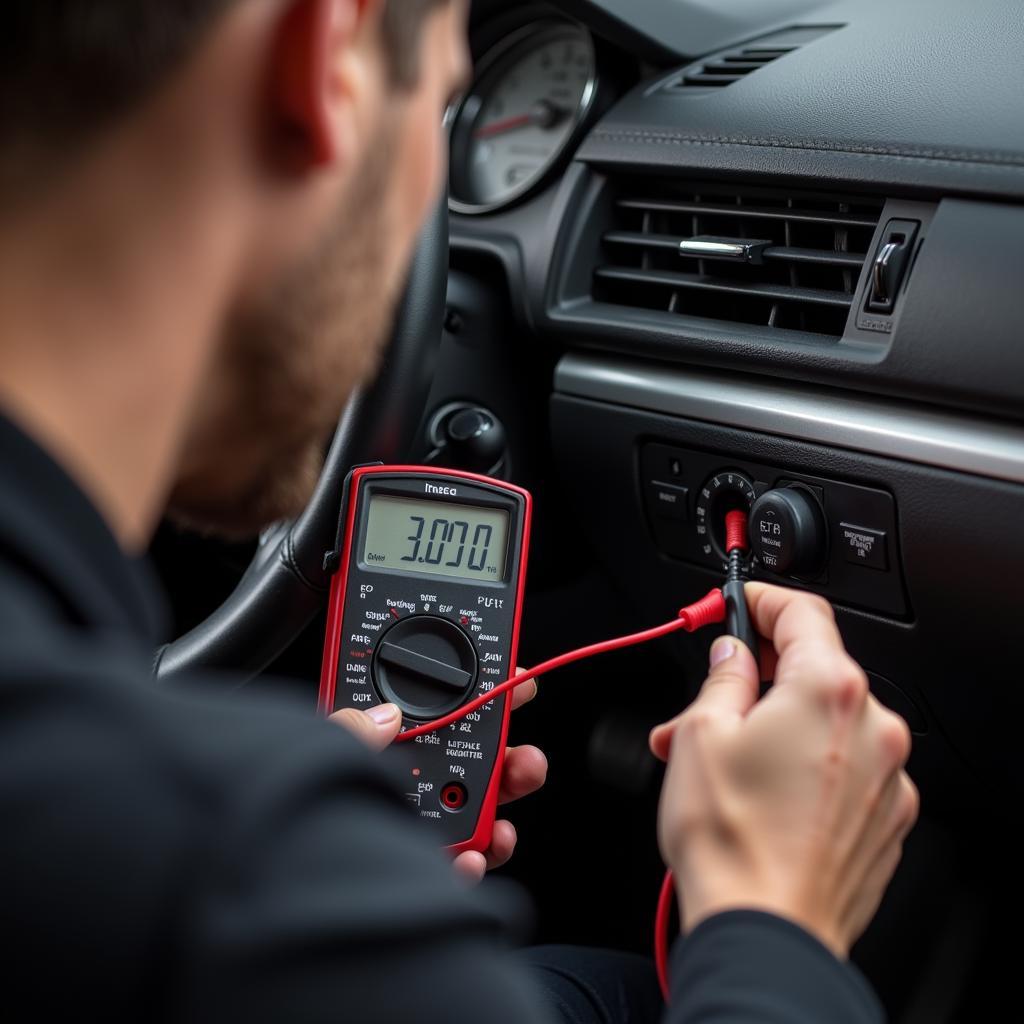A malfunctioning ignition switch can be a major headache, leaving you stranded and frustrated. Understanding the common signs of a bad ignition switch and knowing how to troubleshoot the issue can save you time and money. This comprehensive guide will walk you through the process of diagnosing and fixing a car’s ignition switch.
 Car Ignition Switch Diagram
Car Ignition Switch Diagram
Understanding the Car Ignition System
Before diving into repairs, it’s crucial to understand the basics of a car’s ignition system. The ignition switch itself is the starting point, responsible for sending power to various components when you turn the key.
Here’s a simplified breakdown:
- Key Insertion: When you insert the key into the ignition switch, it aligns metal contacts within the switch.
- Power Transfer: Turning the key allows these contacts to close circuits, sending power from the battery to essential components.
- Starting the Engine: In the “Start” position, the ignition switch activates the starter motor, which cranks the engine to life.
- Accessory Power: The ignition switch also controls the accessory position, providing power to the radio, windows, and other accessories.
Common Signs of a Failing Ignition Switch
Identifying a faulty ignition switch requires recognizing the telltale signs. Here are some common symptoms to watch out for:
- Intermittent Starting Problems: If your engine sometimes starts and sometimes doesn’t, a failing ignition switch could be the culprit.
- Stalling While Driving: Experiencing sudden engine shutdowns while driving is a serious safety hazard and can indicate a faulty ignition switch.
- Steering Wheel Lockup: Difficulty turning the steering wheel, especially when the key is in the “Off” position, can point to an issue with the ignition switch.
- Accessories Malfunctioning: If your radio, power windows, or other accessories work erratically or not at all, it could be linked to a faulty ignition switch.
- Key Stuck in Ignition: A key that’s difficult to remove or gets stuck in the ignition is another common symptom.
Troubleshooting a Car Ignition Switch
 Testing Car Ignition Switch with Multimeter
Testing Car Ignition Switch with Multimeter
If you suspect a bad ignition switch, here are some troubleshooting steps you can take:
- Check the Battery: Before assuming the worst, ensure your battery is charged and the terminals are clean and securely connected.
- Inspect the Fuses: Locate your car’s fuse box and check the fuses related to the ignition system. A blown fuse could be causing the problem.
- Test the Starter: You can test the starter motor by having a helper turn the key to the “Start” position while you listen for a clicking sound or try tapping on the starter motor gently with a hammer. If the starter engages, the ignition switch may be the issue.
- Wiggle the Steering Wheel: Sometimes, a locked steering wheel can prevent the key from turning. Try gently jiggling the steering wheel while turning the key to see if it unlocks.
When to Call a Professional
While some ignition switch issues can be simple fixes, others require specialized knowledge and tools.
“If you’re uncomfortable working on electrical components or haven’t had success with basic troubleshooting, it’s always best to consult a qualified mechanic,” advises John Smith, Senior Automotive Technician at ABC Auto Repair. “Attempting complex repairs without proper knowledge can lead to further damage or even safety hazards.”
Fixing a Car’s Ignition Switch: DIY or Seek Professional Help?
 Mechanic Replacing a Car Ignition Switch
Mechanic Replacing a Car Ignition Switch
The decision to tackle an ignition switch repair yourself or call a professional depends on your comfort level with automotive repairs and the complexity of the issue.
DIY Considerations:
- Experience: Working with electrical systems requires a good understanding of wiring diagrams and safety precautions.
- Tools: You’ll need basic hand tools and potentially specialized tools like a steering wheel puller.
- Time: Ignition switch replacement can be time-consuming, especially for first-timers.
Professional Repair Benefits:
- Expertise: Mechanics have the knowledge and experience to diagnose and repair complex ignition switch problems.
- Specialized Tools: Repair shops have access to specialized tools that may be required for certain vehicle models.
- Warranty: Reputable mechanics often offer warranties on their work, providing peace of mind.
If you decide to tackle the repair yourself, consult your vehicle’s repair manual and follow safety guidelines carefully. However, if you’re unsure about any step of the process, it’s always best to err on the side of caution and seek professional assistance.
Conclusion
Dealing with a faulty ignition switch can be a frustrating experience. By understanding the common signs of a bad ignition switch and following the troubleshooting tips outlined above, you can take the first steps towards getting your car back on the road. Remember, if you’re ever unsure about a repair, don’t hesitate to reach out to a trusted mechanic.
For expert assistance with your car’s ignition switch or any other automotive needs, contact AutoTipPro at +1 (641) 206-8880 or visit our office at 500 N St Mary’s St, San Antonio, TX 78205, United States.
You can also find more helpful articles on our website related to fixing starter on car, fixing your car cigarette lighter, and fixing car brake lights.
FAQs
1. How much does it cost to replace an ignition switch?
The cost of replacing an ignition switch varies depending on the make and model of your vehicle and whether you choose to DIY or hire a professional.
2. Can a bad ignition switch drain my car battery?
Yes, a faulty ignition switch can sometimes cause a parasitic drain on your battery, even when the car is turned off.
3. How long does it take to replace an ignition switch?
The time required to replace an ignition switch can range from a couple of hours to a full day, depending on the complexity of your vehicle’s system.
4. Can I drive my car with a bad ignition switch?
Driving with a bad ignition switch is not recommended as it can lead to dangerous situations like sudden engine stalls or an inability to start your vehicle.
5. Is there a way to prevent ignition switch problems?
While not all ignition switch problems are preventable, avoiding excessive force or hanging heavy keychains on your ignition key can help extend its lifespan. Regular maintenance and inspections can also help identify potential issues early on.






Leave a Reply